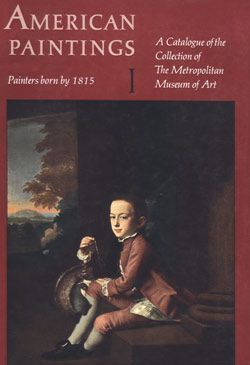Little Girl with Flowers (Amelia Palmer)
Charles Cromwell Ingham American, born Ireland
Not on view
When exhibited at the National Academy of Design in 1830, Ingham's "Portrait of a Little Girl with Flowers" attracted critical scorn for its crisp handling, smooth modeling, and bright light on the figure—the very tenets of contemporary neoclassicism. An Irish painter who must have studied in Paris before coming to New York, Ingham espoused the French neoclassical ideal while others clung to the popular, painterly British model. For this avant-garde portrait, Ingham found a willing subject in Amelia Palmer (1819–1843), the daughter of a Stonington, Connecticut, merchant. The idyllic setting and her sprite-like pose suggests that the artist aimed his artistic ambitions higher than straightforward portraiture. The wildflowers—cotton grass, bull thistles, phlox, violets, silkweeds, milkworts, and pinks—redouble the notion of the girl as classical wood nymph, a fair maiden who guards the place she inhabits.
Due to rights restrictions, this image cannot be enlarged, viewed at full screen, or downloaded.



